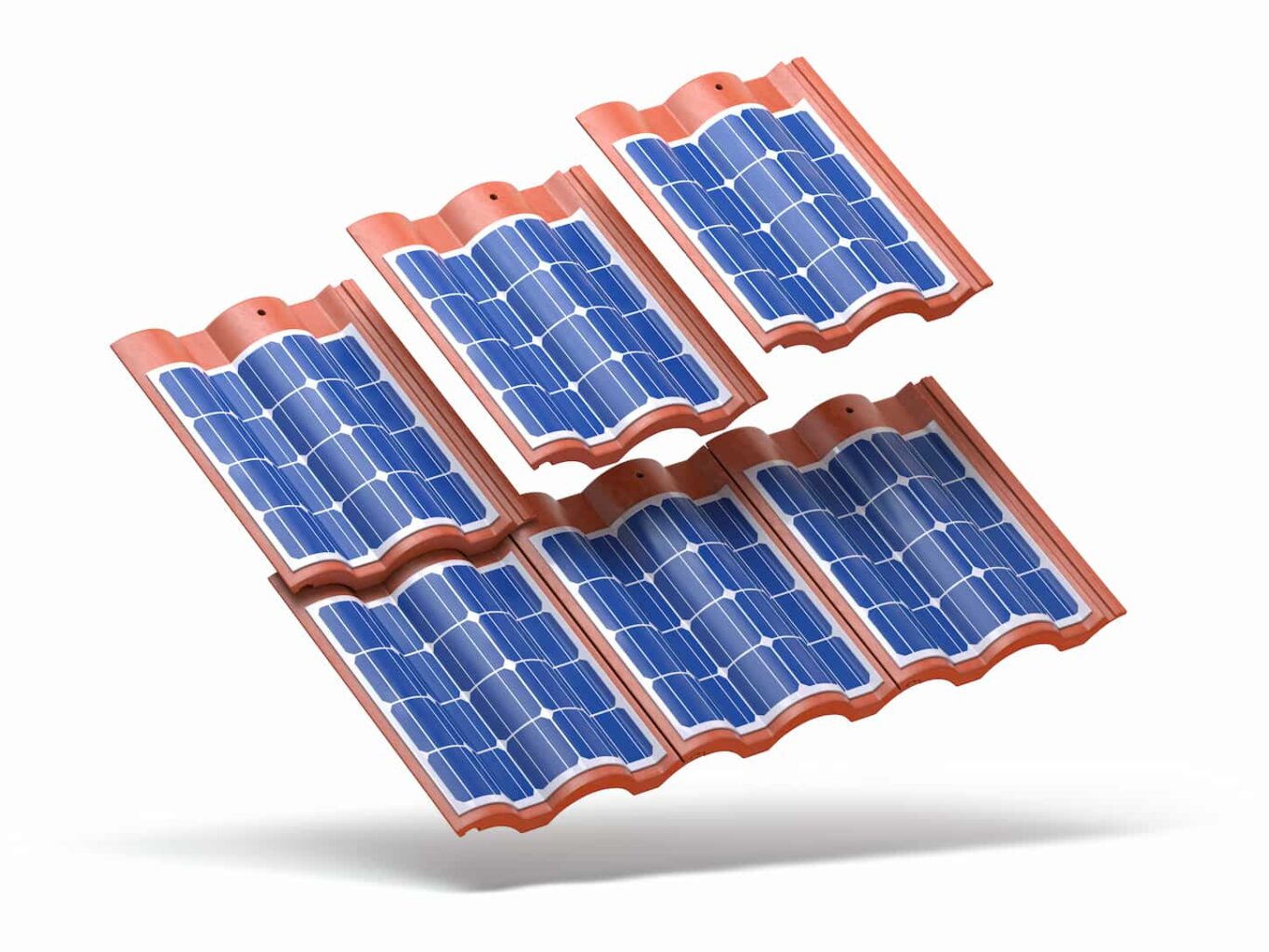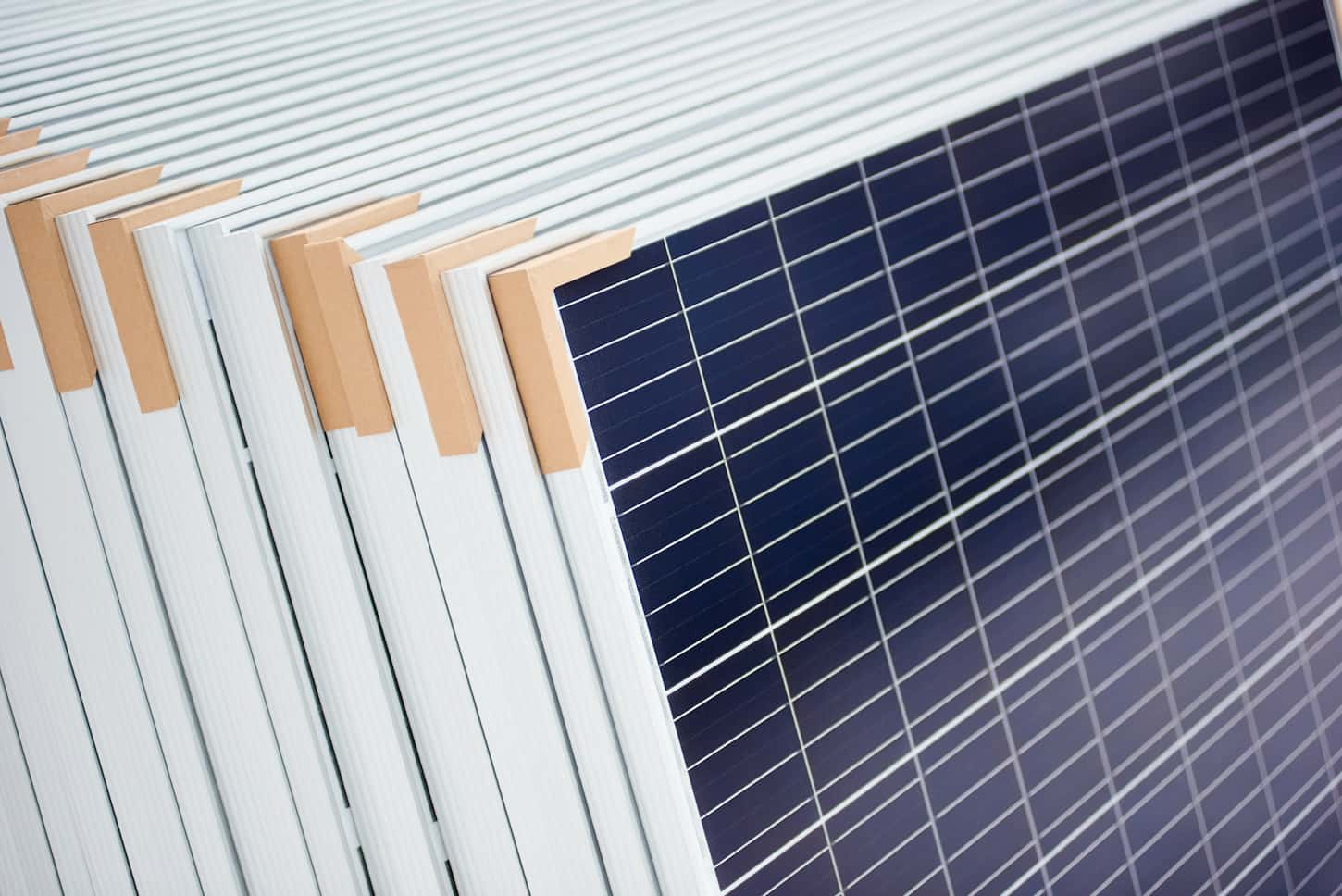Solar power technology has existed for a while – it’s a sustainable and innovative power source worth considering. Running a freeze-dryer on solar power will save money and promote safe environmental practices. So, can you run a freeze-dryer on solar power?
Solar power (from panels) can be enough to power a freeze-dryer with sufficient sunlight. However, the setup may benefit from additional solar devices, such as a rechargeable battery to use when the sun goes down. In the absence of a battery, regular utilities can be a secondary power option.
If you are reading this, you probably live in a sunny area where using solar power is an excellent option for your household. This article will discuss the medium-sized freeze-dryer because that is the most commonly owned type of machine, and it’s what we’ve got. But is it feasible to use solar? A question worth asking; read on to find out how.

Is Solar Power Alone Enough to Run a Freeze-Dryer?
Solar power alone (without a battery) is only enough to run a freeze-dryer during daytime hours. During the day, a freeze-dryer can run off the power provided by the solar panels. But, during the night, it will need a battery or electrical outlet to operate.
A medium-sized freeze-dryer goes through four cycles. The freeze-dryer takes 20 to 40 hours to complete the entire process. For example, a batch of fruit will take about 30 hours to process.
Unfortunately, we can’t pause the freeze-drying cycle at night and wait for the morning to run power off the solar panels. To overcome this, here are some requirements our solar power systems will need.
What requirements do you need for a solar power system for a freeze-dryer?
A freeze-dryer setup usually needs 1300 watts per hour (10 amps), so the solar-powered system will need about 5000 watts on the solar panels, a 2000 watt inverter, and a 12-kWh battery.
On average, a freeze-dryer pulls 1300 watts per hour (or ten amps per hour). So, running a freeze-dryer on just solar power isn’t recommended. At night, the freeze-dryer will need to run straight from the battery or be switched over to electrical.
To accommodate the power, we recommend using a 12-kWh battery (or just switching it over to an outlet), 2000 watts on the inverter, and 5000 watts on the solar panels.
What does the freeze-drying process look like on solar power?
During the day, while the sun is shining, run the freeze-dryer on solar power. At night, the system will use the battery. If the battery empties, the system can use the power grid (electrical outlet). Then, in the morning, go back to solar power.
Here is a possible scenario – let’s assume we have a medium-sized freeze-dryer and want to freeze-dry some fruit. The entire process will last around 30 hours.
So, what are numbers, you may ask? Remember, these are estimates.
| Kilowatt-Hours and Type of Power Used | 8 a.m. | 4 p.m. | Midnight | 8 a.m. | Total kWh used |
|---|---|---|---|---|---|
| kWh Used | 5.9-kWh | 6.2-kWh | 5-kWh | 5.7-kWh | 22.78 kWh |
| Type of Power used | Solar | Battery | Utility | Solar |
A couple of fellow medium-sized freeze-dryer owner produced these numbers and published them on YouTube. You can check the resources section below for those links.
As you can read from the table, the total power usage was 22.78-kWh. The total solar power usage was 11.6-kWh, battery usage was 6.2-kWh, and the utility was only 5 kWh. These are good numbers.
Can a Single Solar Panel Run a Freeze-Dryer?
One solar panel cannot run a freeze-dryer. On average, one solar panel has approximately 300 watts, and a freeze-dryer at its peak pulls around 1200 watts per hour.
Solar panels convert sunlight into electricity. Usually, an average household has sufficient roof area to install the number of solar panels needed.
To find out how many solar panels we need for our homes, we should determine the amount of home energy use, roof area, and the weather in that area for best results.
What is the cost of a solar panel?
A solar panel, on average, costs between $0.65 to $2 per watt. A 300-watt panel could cost anywhere from $195 to $600. Generally, solar panels cost less in warmer areas, but systems require more panels. Solar panels are more expensive in colder regions, but the home may require fewer total panels.
This is a solid range to give you an idea of what it costs. There may be various sales and such to find better pricing. Also, keep in mind that everything has an upkeep cost, so you’ll want to consider what that may mean in your case.
How Many Solar Panels Would It Take to Run a Freeze-Dryer?
To run a freeze-dryer, approximately 17 solar panels will be necessary. One solar panel provides about 300 watts. Therefore, for one batch of fruit to process in the freeze-dryer, it will need 5,000 watts (5kW).
When estimating the number of panels a household needs, there are a couple of things to consider, like the home size and amount of energy used. Check out the table below for more information.
| Home Size | Avg. Energy Used Per Month | Recommended # of Panels |
|---|---|---|
| Home Size | Avg Energy Usage per Month | Recommended Number of Panels |
| 1500 sq ft | 633-kWh | 14 – 17 |
| 2000 sq ft | 967-kWh | 19 – 25 |
| 2500 sq ft | 1023-kWh | 24 – 30 |
| 3000 sq ft | 1185-kWh | 27 – 30 |
Remember that this is a general table based on average home sizes. Besides the freeze-dryer, people want to run other appliances on solar power. Read on to find out more!
What size solar panels do I need for my household?
Track the daily appliance’s watt usage. For instance, if the TV is 100 watts and used for five hours per day, the system needs 500 watts. Next, divide the annual wattage of your appliance by the solar panel wattage. For instance, a 600-kWh refrigerator will need two solar panels (600 / 300 = 2).
If someone doesn’t want to track each appliance’s wattage, they can check out the electricity bill (in kWh).
To determine what size of solar panels the household needs, we recommend making a list of appliances (TV, refrigerator, microwave, laptop, etc.) you want to run on solar power.

Key Takeaways and Next Steps
It’s possible to run a home freeze-dryer on solar power, but we’ll need to adapt a little. We’ll need to make some purchases, like an excellent usable battery, and let’s not forget the solar panels. We don’t advise running your freeze dryer solely on solar power.
If we look at science, it’s clear we should switch to solar power. Solar panels are environmentally friendly and a good investment. But, on the other hand, panels rely on the sun.
So, if we live in an area that doesn’t have enough sunny days, perhaps solar power isn’t a good choice for our freeze-dryers because they need a lot of power.
Although even in cloudy areas, solar panels will work, they produce less power. This is because solar panels use indirect and direct sunlight to produce energy. But, without a doubt, they are most effective when they absorb direct sunlight.
Hopefully, we have given you some insight that cleared up any doubts regarding numbers. When doing the math, solar power in the long term will save money, and so will using the freeze-dryer.
Furthermore, if we decide to run our freeze-dryers on solar power, we should do the same with our other appliances.
In a way, solar power goes hand in hand with the freeze-dryer. Reducing leftovers, growing our food, and then freeze-drying is very sustainable, and so is solar energy.
Harvest Right freeze dryers are a U.S. company that makes the purchase much more straightforward.
Our favorite freeze-dryer brand is Harvest Right, which we use and highly recommend – you can shop their current sales here (this link takes you to their site). The medium-sized freeze-dryer is the most popular one because we can plug it into any outlet at home, and it’s excellent for home use.
If you try to run Harvest Right freeze-dryer on solar power, let us know how that works!
Ready to read more about optimizing your freeze-dryer? Make sure you read these guides we’ve written for all freeze-drying owners and researchers.
- Complete Guide To Freeze Dryer Vacuum Pumps (Oil And Oil-free)
- 17 Reasons You Need a Freeze-Dryer
- Do Freeze-Dryers Use a Lot of Electricity?
- Can You Rent a Freeze-Dryer? Things to Know!
- Can You Make Money with a Freeze-Dryer? Complete Guide
If you’re serious about using solar to make your freeze-drying setup more green, definitely make sure you check out the article on the pumps – it’s super easy to make a DIY filtration system for the oil-based pump so that it’s both more efficient and environmentally responsible.
Resources
Learning from your own experience is essential, but learning from others is also intelligent. These are the sources used in this article and our research to be more informed as homesteaders.
- Clark, Kendall. “Solar Power’s Day in the Sun Has Arrived.” Mercer Foods, 4 Dec. 2020, www.mercerfoods.com/solar-power-at-mercer-foods.
- “Freeze Dryer On Solar Power System? Testing Our Harvest Right.” YouTube, uploaded by Country Living Experience: A Homesteading Journey, 10 Apr. 2022, www.youtube.com/watch?v=G1rIJrWVv8Q.
- “Harvest Right Freeze Dryer – Cost Analysis and Optimizing Load Size.” Common Sense Home, 9 May 2022, commonsensehome.com/harvest-right-freeze-dryer.
- Harvest Right. “FAQs.” Harvest Right, 30 July 2019, harvestright.com/faqs.
- “Harvest Right Freeze Dryer Running on Solar Power.” YouTube, uploaded by Homestead Engineering, 13 Nov. 2021, www.youtube.com/watch?v=YAB8kkd4-ys.
- “How Much Solar Power Do I Need to Run My Appliances? · HahaSmart.” Haha Smart, www.hahasmart.com/blog/2634/how-much-solar-power-do-i-need-to-run-my-appliances. Accessed 30 June 2022.
- Nexamp, Team. “How Many Solar Panels Do I Need?” Nexamp, 20 Mar. 2022, www.nexamp.com/blog/how-many-solar-panels-do-i-need.
- “Solar Cable Gauge Calculator, Solar Panel Calculator | Renogy.” Renogy United States, renogy.com/calculators. Accessed 30 June 2022.
- “What Can a 300 Watt Solar Panel Run?” Renogy United States, renogy.com/blog/what-can-a-300-watt-solar-panel-run. Accessed 30 June 2022.
